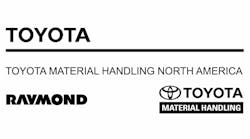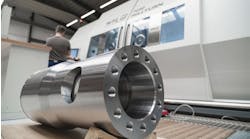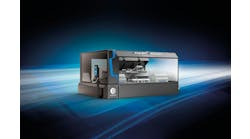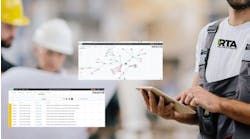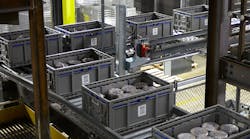Raise your hand if you view the manufacturing plant, distribution center, delivery and in-store as separate entities within your supply chain. Your hand is probably in the air because this approach is the traditional way of operating. But, with modern-day dynamics such as omni-channel, it may be limiting.
Your supply chain likely operates this way because the needs and metrics of each supply chain loop—manufacturing plant, DC, retail delivery and in-store—are different. But times are changing, and your entire supply chain’s goals should be more aligned than ever. Because supply chains have many moving parts, they often can become disconnected. And a disconnected supply chain may lead to increased costs and inefficiencies. Therefore, when considering one part of the supply chain, consider the needs of all.
One example of this is a transportation metric. When considering floor loading trailers, delivery is most concerned about maximizing truck space. However, this maximization can negatively impact the receiving side—in-store—as retailers may experience an increase in labor needs and longer unload times due to a higher number of touches. But, when the supply chain is aligned, these competing metrics are mitigated and all parts operate more effectively.
OMNI-CHANNEL’S IMPACT ON THE SUPPLY CHAIN
Over time, supply chains are faced with new, and sometimes disrupting, dynamics. Omni-channel, for example, requires a retail supply chain that supports physical and digital commerce and fulfillment closest to the consumer. This dynamic calls for advanced material handling at every touchpoint along the supply chain to achieve goals such as speedier fulfillment, more accurate picking, fewer stockouts and high-value customer experience.
Instead of the traditional, linear supply chain—from the DC to the store—an omni-channel supply chain may require goods to be moved out of the DC to the retail environment or picked within a retail environment and staged for consumer pickup. This growing complexity of moving goods throughout the supply chain has retailers seeing a lot more material movement in the network, requiring a more connected and cohesive system to ensure all parts are working together.
THE COST OF A DISCONNECTED SUPPLY CHAIN
One downfall of viewing a supply chain in silos is a higher risk of overall costs. Often, the costs saved in one area of the supply chain are unknowingly pushed to a different one. Like the transportation example above, more loads per truck could increase costs at retail. That is why communication and collaboration are key to determine cost-saving initiatives that will result in a higher profit margin for the company. It’s important to know that what works in one area might not be the best business decision for the entire supply chain.
Supply chain loops to consider when making cost-saving decisions include:
Manufacturing Plant
Manufacturing plants require versatility and efficiency within their four walls. With reusable packaging, for example, plants can streamline inbound shipments from suppliers, work-in-process activities, in-plant storage, interplant transfers and outbound shipments. Reusable packaging also can streamline product flow, reduce quality issues, allow better warehouse space utilization, improve plant cleanliness and boost truckload optimization.
Distribution Center
Today’s DCs are constantly evolving to meet marketplace demand and omni-channel requirements. With added automation and sophisticated picking systems, DCs require standardized packaging that delivers repeatable performance. Using reusable packaging such as totes, bulk containers and pallets, DCs can accelerate picking and fulfillment. Plastic packaging also can raise facility cleanliness and picking efficiency, minimize product damage, and improve associate ergonomics within DCs.
Retail Delivery
Moving product from DCs to retail requires planning and efficiency. Whether shipping in a standard trailer or delivery trucks, maintaining quick load/unload times and fast merchandising are critical. Using carts, wheeled pallets and plastic totes can help reduce associate labor with the ability to quickly roll product from the truck to the aisle. These solutions also can reduce product damage, require less repacking or downstacking, increase the number of turns, and reduce costs per trip.
In-store
Today’s retailers seek to provide a meaningful customer experience while balancing the need to operate efficiently, boost sales and provide higher levels of customer service to meet customer needs. In addition, e-commerce requires stores to act as DCs. So, in a smaller space, stores are being asked to pick, stage and deliver orders.
Solutions to efficiently condense and serve multiple purposes support these objectives. From wheeled pallets for one-touch merchandising to picking solutions for in-store fulfillment, reusable packaging can enhance the customer experience. These solutions help reduce labor costs associated with incoming deliveries, lead to faster shelf replenishment and allow for quick online order picking.
In terms of omni-channel, if there is confusion between these supply chain loops, costs could increase due to new needs, such as more fulfillment centers and expedited deliveries. If all supply chain loops—manufacturing plant, DC, retail delivery and in-store—operate with these factors in mind, the chance of new thinking will emerge to make costs as consistent and efficient as possible.
There have been instances when a customer can achieve total cost savings but only if one area picks up a little more responsibility or does something slightly different. Such scenarios may be met with some resistance. But if both areas understand what the business as a whole will achieve, more engagement—and more total cost savings—likely will result.
THE MARRYING EFFECT OF REUSABLE PACKAGING
Many reusable packaging solutions have features that are intended to add value to different supply chain parts while pushing the company forward. A more specific example is a small-format pallet. In a DC, a small-format pallet may require a slightly different pack out, but, at delivery, significant efficiencies are created as the product can seamlessly go through doors instead of requiring downstacking over multiple trips. Also, the cube of the trailer may increase as loads are pushed more vertical if there are frequent deliveries.
Another example is bulk merchandising solutions. These solutions are designed to reduce the time and labor needed to unload and replenish merchandise in store, so store associates are free to interact more with customers, which improves shopper satisfaction. Bulk merchandising solutions also promote sales lifts for the retailer, all while maximizing space savings for suppliers to increase backhaul effectiveness.
The good news is that benefits can accrue to all supply chain loops. Picking, fulfilling, distributing and merchandising all require efficient processes.
A ONE-STOP-SHOP SUPPLIER’S ROLE
To create a cohesive supply chain with reusable packaging solutions, a one-stop-shop supplier can provide expertise and a holistic view of the supply chain to help determine innovative solutions that solve needs and challenges. Supplier collaboration can help a business select and implement a reusable packaging program to ensure a retail supply chain is completely in sync and all parts are working in unison.
One-stop-shop suppliers also are often able to anticipate the impact on other supply chain parts when discussing a new solution and assist you in managing change across different supply chain loops. Similarly, as more solutions incorporate multiple components (such as a tote and dolly), a one-stop-shop supplier can ensure the product will work well and transition between platforms.
With this in mind, consider using a one-stop-shop supplier to help you identify inefficiencies in your supply chain and how reusable packaging can help ensure all parts work in unison. Now, raise your hand if your supply chain needs to be more connected. Hopefully, your hand is back in the air.
Andrea Nottestad is market manager, retail supply chain with ORBIS Corp. (www.orbiscorporation.com), a manufacturer of plastic returnable/reusable products for use in material handling applications.
If used, all should have the “ORBIS” credit line.
